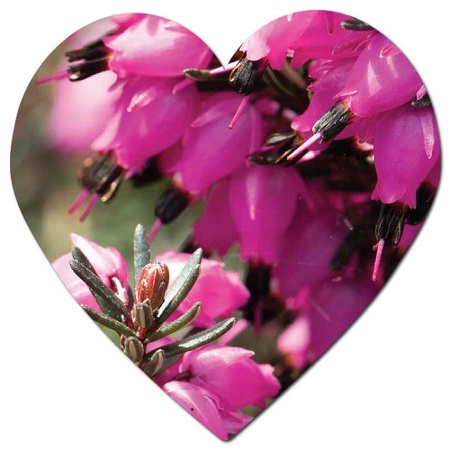Erica carnea, commonly known as winter heath or heather, is not typically used as a cut flower in arrangements or vases. While it produces small, tubular flowers that can be attractive, they are more commonly appreciated on the plant rather than in a vase. The primary ornamental value of Erica carnea comes from its appearance in the garden, especially during the late winter to early spring when it produces a profusion of blooms.
If you’re looking for flowers to use in vases, you might want to consider other types of flowers that are specifically grown for their cut flower qualities. These flowers are often selected for their longer vase life and ability to hold up well in floral arrangements. Popular cut flowers include roses, lilies, sunflowers, and various types of daisies, among others.

If you have specific floral arrangement needs, it’s always a good idea to consult with a florist or someone knowledgeable about cut flowers to select the most appropriate and long-lasting blooms for your purposes.
How often do you water Erica?
The frequency of watering Erica carnea, commonly known as winter heath or heather, depends on various factors, including the climate, soil type, and the specific conditions of your garden. Here are some general guidelines to help you determine how often to water Erica:
- Well-Drained Soil:
- Erica carnea prefers well-drained, acidic to neutral soil. It’s crucial to ensure that the soil does not become waterlogged, as this can lead to root rot. Use a soil mix that promotes good drainage.
- Established Plants:
- Once established, heathers are relatively drought-tolerant. However, during dry periods, it’s essential to provide supplemental water to keep the soil consistently moist.
- Watering Frequency:
- In general, water your Erica carnea when the top inch (2.5 cm) of soil feels dry. Stick your finger into the soil, and if it feels dry at this depth, it’s time to water.
- Climate Considerations:
- The climate in your region plays a significant role in determining the watering frequency. In warmer or drier climates, you may need to water more frequently than in cooler or more humid areas.
- Avoid Overwatering:
- While heathers appreciate consistent moisture, they do not tolerate waterlogged conditions. Overwatering can lead to root rot, so it’s crucial to strike a balance and allow the soil to dry slightly between watering.
- Mulching:
- Applying a layer of organic mulch around the base of the plants can help retain soil moisture, reduce evaporation, and suppress weeds. Mulching is especially beneficial in areas with fluctuating temperatures.
- Watering During Dry Spells:
- During extended dry spells or periods of drought, you may need to increase the frequency of watering. Monitor the moisture levels in the soil to ensure the plants receive adequate hydration.
- Morning Watering:
- Watering in the morning allows the foliage to dry during the day, reducing the risk of fungal diseases that can thrive in damp conditions.
Always adjust your watering routine based on the specific needs of your Erica carnea and the environmental conditions in your garden. Observing the plants and the soil moisture regularly will help you provide the appropriate care for these lovely evergreen shrubs.
